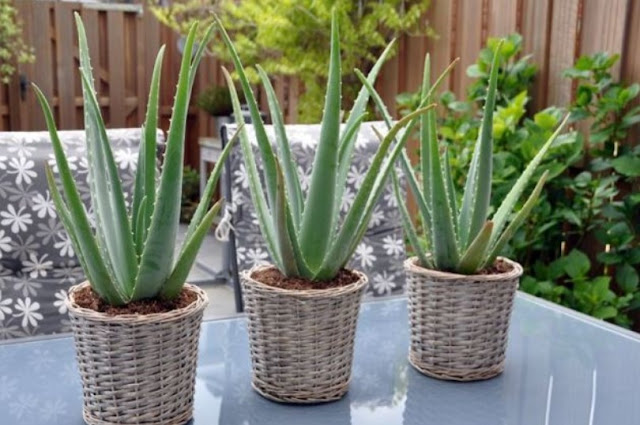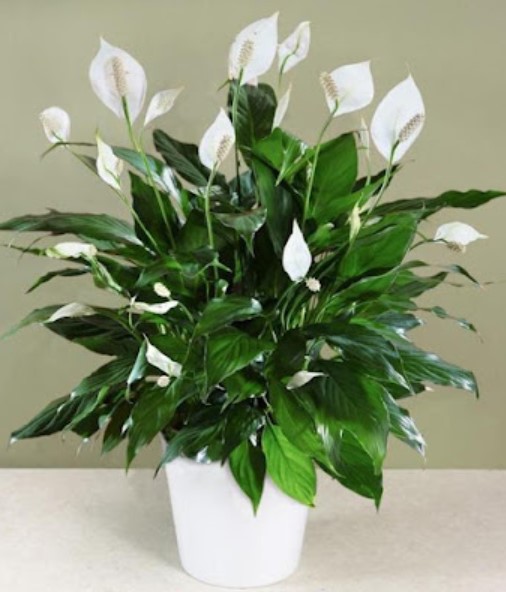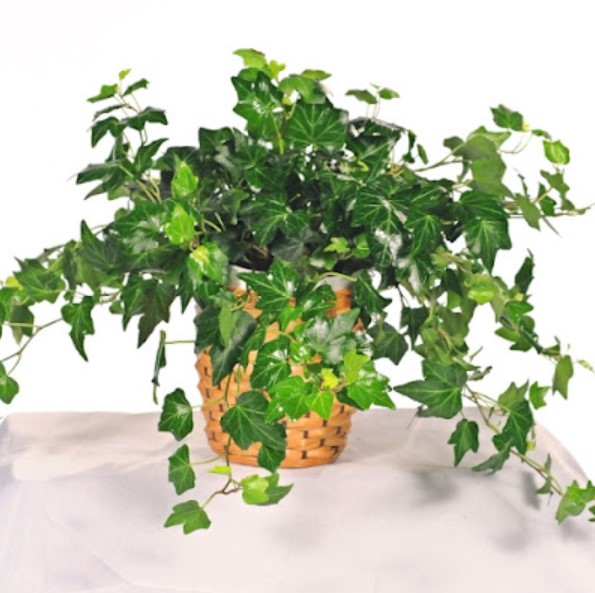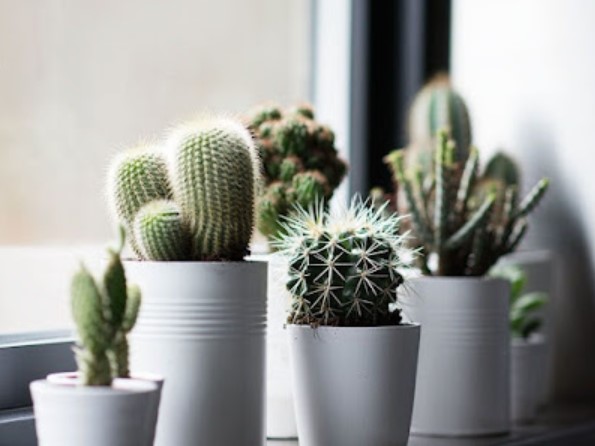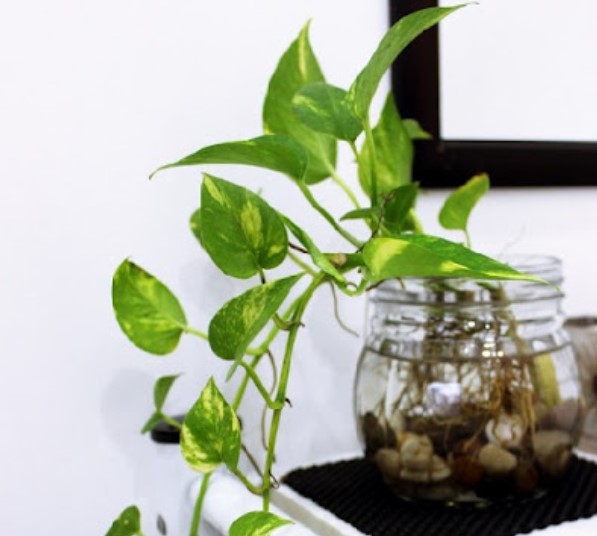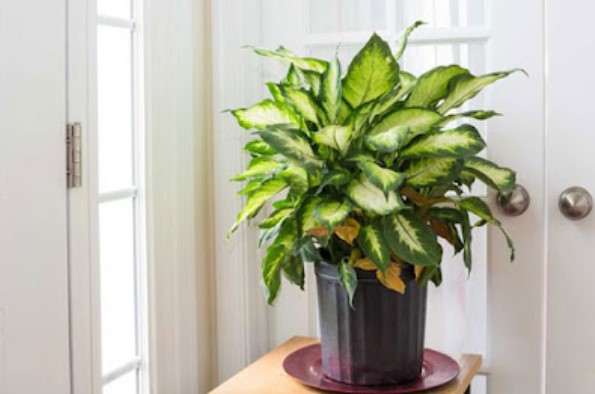Having indoor plants is great for your home. Indoor ornamental plants can create coolness as well as a new feel in the house, make it feel fresh and add fun to the interior decoration of the house.
To keep the beauty of the house, of course you also have to keep the plants alive. As living organisms, plants need a lot of nutrients when they leave their natural habitat, so there are several types of indoor plants that require a lot of complicated care.
But not all indoor plants require a complicated level of care. You're sure to find plenty of plants that don't need more than a little sun and water.
Finding plants that are easy to maintain is fun, because you can stay focused on your activities at home without the need to often take care of 'spoiled' plants which usually have a high price.
Indoor plants do not have to be expensive, unless you are a fan or collector of ornamental plants. If you want to provide indoor plants for your room in a cost-effective and energy-efficient way, then you can apply indoor plants with easy care that are also easy to find.
Easy Plants To Take Care Of Indoors
There are several ornamental plants that can be applied to your home, which not only provide cheap maintenance but also benefits in your home and you should consider placing them in the corners of your home.
The following indoor plants are easy to care for as well as many benefits:
1. Aloe Vera
Aloe vera is the perfect solution if you are looking for a low maintenance and useful indoor plant. Not only beautiful with a cool shape, aloe vera adds an interesting texture as a decoration. In addition, aloe vera is also known for having a soothing gel in its leaves.
Aloe vera is very easy to care for. You only need to water about once every three weeks, the important thing is to water it with plenty of water. You can test when aloe vera is watered. Put your finger in the soil and if there is wet soil stuck to it, then you can water it another time.
Benefits: Aloe vera gel can be useful for your beauty treatments as well as help relieve blisters and burns. So that this plant is not only applied in the corner of the room, it is very suitable to be placed in your kitchen.
2. Peace Lily
Peace Lily has deep green leaves with white flowers, making a combination that is crunchy enough to be applied indoors, especially if you like flowering plants that are graceful and easy to care for. But be careful because this plant is poisonous. Keep out of reach of children and pets.
Peace Lily is a tropical plant, so it loves warmth and humidity. You just water enough just to keep the soil moist. But be careful not to over-water and allow the soil to dry before watering again.
Peace Lily prefers a little water to too much water. Besides watering, also water the leaves with a splash of water to increase the humidity for the plants. This flower also likes shade. So put it in a warm place where it doesn't get direct sunlight.
Benefits: Peace Lily can clean indoor air from pollutants such as benzene and formaldehyde. Benzene is a pollutant produced from paint, glue, cigarette smoke, or camphor.
While formaldehyde which has another name formalin is a pollutant found in tobacco smoke (cigarettes) and also motor vehicle exhaust fumes. The roots and leaves are the parts that absorb pollutants, a maximum of 87% of pollutants can be absorbed within 24 hours.
3. Spider Plants
Spider Plants are easy to grow and can grow in a variety of environments. Its abundant leaves will give a fresh green feel to your home. This plant is easy to care for, as long as you give it good soil and bright indirect light. Avoid direct sunlight because it can burn the leaves.
For watering, keep these indoor plants moist, but not soggy. Allow the soil to dry slightly to resume watering. We recommend that you put it outdoors at night because this plant will still breathe oxygen at night, in addition to preventing the breeding of mosquitoes in the room.
Benefits: Spider plant is able to filter dirty air in the room. This ornamental plant is also able to absorb odors, absorb chemicals in the air and cancer-causing substances that fly around the room.
4. Tongue-in-law
Many like Tongue-in-law because it is a tough plant with very easy maintenance. Mother-in-law's tongues thrive in almost any light condition, they need very little water and can still survive the occasional lack of water.
Its fashionable leaves with wide shapes, green and yellow will add a perfect touch and natural elegance in your home interior design.
Mother-in-law's tongue likes a bright place, although it can grow in the shade. You can water the mother-in-law's tongue every now and then, don't let it overflow which can make the plant rot. Be sure to wipe the leaves with a damp cloth occasionally to remove dust. If the plant is overgrown, you can divide it and put it in a new pot.
Mother-in-law's tongue plant is toxic to pets. So keep plants out of reach of children and pets in your home.
Benefits: Mother-in-law's tongue can absorb toxic materials such as carbon dioxide, benzene, formaldehyde and trichlorethylene. In addition, the mother-in-law's tongue is also able to absorb radiation generated from electronic items such as computers, televisions, and even sound systems.
Just like other aloe plant species, Mother-in-law's Tongue gel can also be used to thicken hair.
5. English Ivy
English Ivy is a beautiful leafy plant, hardy and easy to grow. This plant likes shady areas. Like vines, English Ivy plants love to climb.
So for indoor planting, keep them in vertical pots until they can grow around them, or in Hanging Pots where they can sprout.
To care for English Ivy, simply keep the soil moist and slightly dry between waterings. You can give fertilizer once a month as well as trim it to make it look neat and beautiful.
Benefits: Can absorb pollution.
6. Philodendron
Philodendron is a tropical plant that loves moisture and sunlight. They are great houseplants and are adaptable and easy to care for. You can place the Philodendron in direct or indirect sunlight. If the leaves turn yellow, it's likely too much light.
For maintenance, keep the soil consistently moist and only water when the soil above is dry. Because it has wide leaves, be sure to clean it to avoid dust buildup that can hinder photosynthesis. Fertilize regularly for bigger, healthier leaves.
Philodendron plants also contain poison if ingested, so keep Philodendron out of reach of children and pets.
Benefits: This plant can absorb indoor air pollutants such as formaldehyde pollutant substances commonly found in foam materials and dust particles on carpet materials.
7. Lavender
The purple color and fragrant scent make lavender the right choice to be applied in the interior of your home. This plant can grow in areas with an altitude of 600 - 1300 meters above sea level. Avoid placing this plant in a place that is exposed to direct sunlight because this plant is not heat tolerant.
For maintenance, don't water the lavender too often and don't let it dry out too much. Use compost at least once every two weeks for growth.
Benefits: The aroma prevents mosquitoes from coming into the house. Lavender flower extract also contains polyphenolic compounds that can prevent the emergence of free radicals and cancer cells. To get the benefits of lavender flowers on this one, often consume lavender flower extract tea.
8. Cactus
Babies who like ornamental plants, cacti can be a collection. But if not, cactus can be an option if you are lazy to take care of ornamental plants in the house. This plant can be said to be easy because it only requires simple and non-routine maintenance.
You can plant cacti in sand media like their natural habitat (desert). This plant likes dry and not humid conditions, so to water it must be in conditions with the weather.
If the weather is dry, water every three days. If the rainy season, you can water it once a week. Use a spray for watering so the cactus is not damp.
You can put the cactus in the sun, but don't leave it out too long, as this can burn the body.
Benefits: Cactus is very good for cleaning the air and removing toxins. Cactus is able to remove 87 percent of volatile organic compounds (VOCs), such as benzene and formaldehyde which are often found in carpets, cigarette smoke, shopping bags, books, and ink.
In addition, placing cacti or other succulents in the room can reduce flu symptoms, headaches, and coughs.
See other articles: 9 Small Garden Inspirations in the House, Minimalist and Refreshing!
9. Betel Ivory
Betel ivory is an ornamental plant that is quite popular. If free-living, this plant can propagate in other plants and extend up to tens of meters. If planted in a pot, betel ivory will have a smaller leaf size.
This plant is difficult to die and has a long life. As a plant that is easy to grow and care for, many people are interested in growing ivory betel.
This plant can be used as an ornamental plant indoors or outdoors. In addition, the planting medium can also be on the ground or in water. If you want to plant in water, use groundwater that contains a lot of minerals and change it every few days to avoid the growth of mosquito larvae.
For maintenance in pots, it is better to water every day and do not let it dry out. This plant does not need additional fertilizer. Betel ivory can also be toxic to pets. So keep your pets from consuming these ornamental plants.
Benefits: Ivory betel can absorb carbon monoxide and formaldehyde gas in the air.
10. Monstera deliciosa
This plant has become a byword because it has an impressive shape. The leaves are not only wide but have a unique shape. This plant is hardy with cold and hot weather so it is easy to plant in any place.
Monstera deliciosa belongs to one of the vines. The roots on the stem allow it to propagate and absorb water and nutrients in order to grow.
To care for it, provide lots of light and moisture, because the more light, this plant can grow the better, but that doesn't mean you have to put it in direct sunlight. Keep monstera deliciosa in the shade. To maintain the humidity, you can put this ornamental plant in a bathroom that has good lighting.
Do regular watering once a week and clean the broad leaves to remove accumulated dust. Behind the beautiful appearance, this plant contains poison in all parts. The fruit of this plant contains oxalic acid which is dangerous for consumption. So, keep it out of reach of children and pets.
Benefits: In some other types it is cultivated as an edible fruit and has a taste of a combination of banana and pineapple. The fruit, which belongs to the grape family, can be used to treat snake bites or arthritis.
11. Sri Fortune
Sri fortune is an ornamental plant that has an attractive leaf appearance and is able to give a fresh feel in the room. Aglonema is an ornamental plant that can grow well in humid places and has a low light intensity so it is very suitable to be used as an indoor ornamental plant.
For maintenance, water the plant every morning and evening with water that does not contain chlorine. You can apply NPK fertilizer every two weeks for additional nutrients. In order to grow well, replace the planting medium regularly every 6-12 months.
Benefits: Sri Rejeki plants have a function to overcome various pollutants. The anti-bacterial function contained in this plant can reduce the number of harmful fungal and bacterial spore populations by up to 50%.
Combining Sri Rejeki plants and adult mother-in-law's tongue can replace the air conditioner. The pollution that can be neutralized by the combination of Sri rejeki and Tongue-in-law is pollution caused by cigarette smoke and microorganisms.
Those are some ornamental plants that are fairly easy to care for and have additional benefits that are good for you and your family. So, which plant do you choose?
